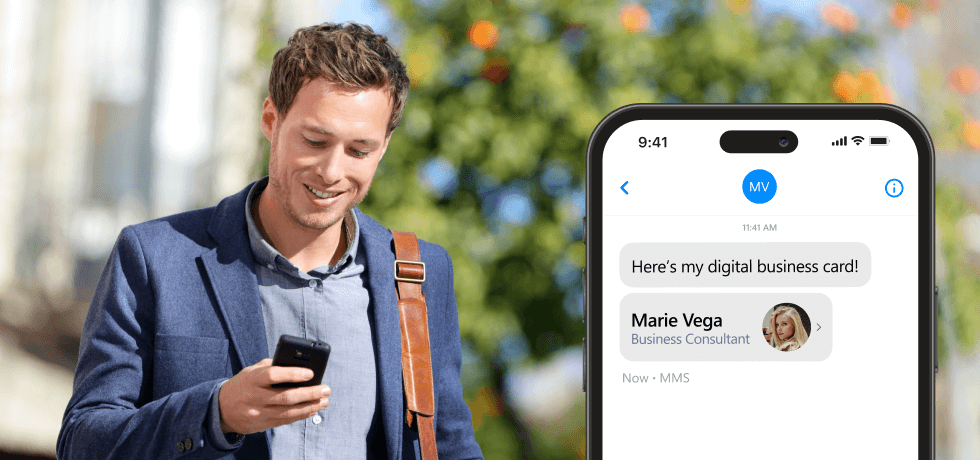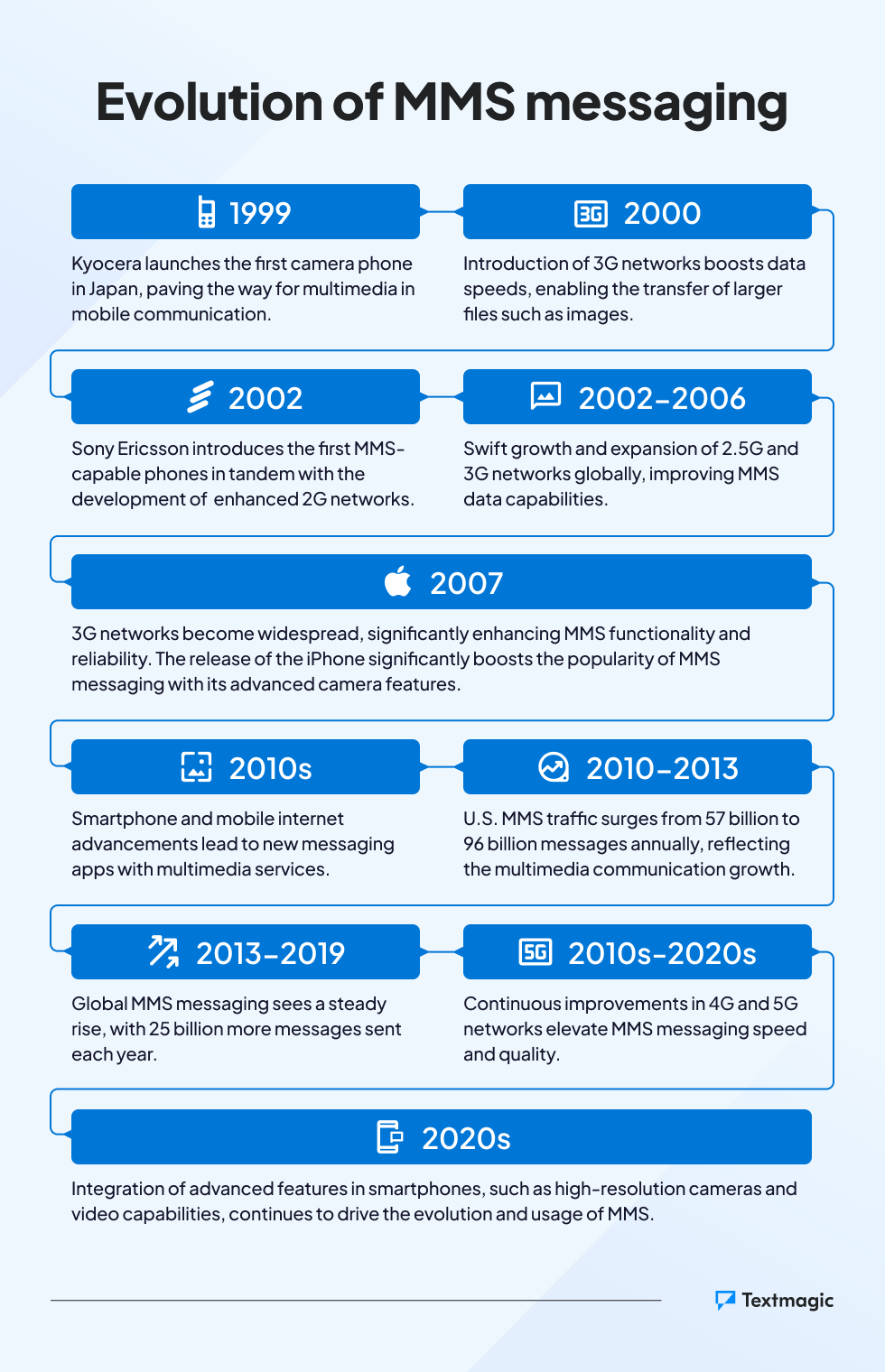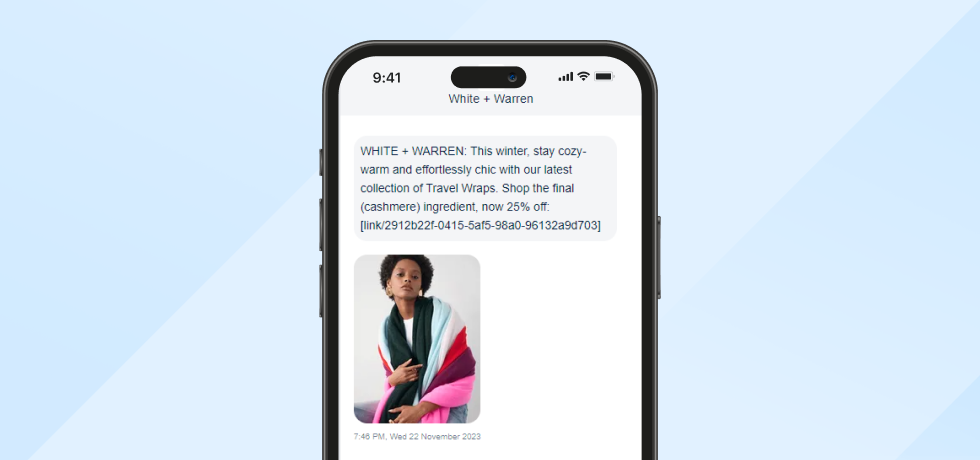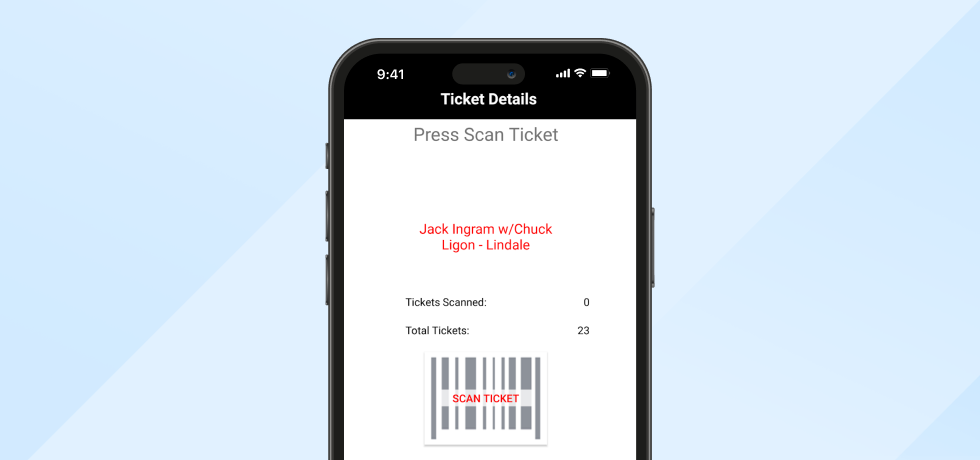
MMS messaging has been around for almost 20 years now, but many businesses are not taking advantage of its unique capabilities.
MMS enjoys the open rates of texting and can send a range of media to any mobile phone. This can have many business uses.
So, what is MMS messaging, and how can it enhance your business?
What is MMS messaging?
Multimedia Messaging Service, or MMS, is a standard way to send messages that include multimedia content to and from mobile phones. It extends the core functionality of the more basic Short Message Service (SMS) by allowing the exchange of various types of media such as text, pictures, GIFs, video, and audio.
Unlike SMS, which is limited to text only and constrained by a character limit, MMS does not have a strict size limit, though there is a practical limit set by mobile operators.
Sony Ericsson released the first phones with MMS messaging features in 2002. This was almost a decade after Nokia sold the first text-capable handsets. Other phone companies adopted the feature over the next few years. In no time at all, it was a standard feature for all phones.

Key characteristics of MMS
- Media content: MMS supports a wide range of media types, including JPEG, GIF, and PNG images; audio files like MP3 and MIDI; and video files in formats like MP4 and AVI.
- Multimedia composition: MMS allows for the creation of multimedia presentations, combining text, images, and sound in a single message.
- Device compatibility: MMS messages can be sent across different types of mobile devices and networks, though compatibility issues can arise due to varying levels of support for media formats.
- Network requirements: MMS relies on cellular data or Wi-Fi connectivity to send and receive messages, as opposed to the traditional circuit-switched network used for SMS.
- Integration with messaging applications: MMS is typically integrated into the same messaging applications on mobile devices that handle SMS, offering a seamless user experience.
- Cost: Unlike SMS, which is typically charged per message, MMS costs are often based on the size of the sent data, and pricing can vary between mobile service providers.
MMS messaging vs MMS marketing
While similar in using Multimedia Messaging Service (MMS) as a technology, MMS messaging and MMS marketing differ significantly in their purpose, audience, and application:
| Aspect | MMS Messaging | MMS Marketing |
|---|---|---|
| Purpose | Personal communication between individuals. | Promote products, services, or brands. |
| Audience | Friends, family, personal contacts. | Customers, potential leads, targeted demographics. |
| Content | Diverse and personal (photos, videos, audio). | Commercial/promotional (branded visuals, offers). |
| Privacy and Consent | Based on mutual consent and existing relationships. | Requires recipients’ consent (opt-in), regulatory compliance (GDPR, CAN-SPAM Act). |
| Frequency and Volume | As needed, based on individual communication. | Planned, part of a marketing strategy, regular schedule. |
| Intent | Personal communication. | Promotional/marketing communication. |
| Scale and Volume | Individual and occasional. | Large-scale, campaign-based. |
| Content Nature | Personal, informal. | Professional, branded. |
| Regulatory Compliance | Less stringent for personal use. | Highly regulated for marketing purposes. |
MMS messaging benefits
- Enhanced personal expression: Through MMS, users can express themselves more vividly and personally. For instance, sending a photo or a video clip can convey emotions and experiences in a way that text cannot.
- Information sharing efficiency: MMS is an efficient way to share complex information. For example, instead of describing an object or a scene with text, a user can simply send a picture or video, providing a clearer and more immediate understanding.
- Wide accessibility: MMS doesn’t require a smartphone or an internet connection, unlike many messaging apps. It’s compatible with most basic mobile phones, making it accessible to a wide range of users.
- No need for additional apps: MMS functionality is typically built into the standard messaging services of mobile phones. This means users don’t need to download or set up additional apps to send multimedia messages.
Are businesses overlooking the benefits of MMS messaging?
82% of text messages are read within 5 minutes. While you can also send media to customers through email and instant messaging, neither of these options compares to the high open rates of text messaging. Less than a quarter of marketing emails will ever be opened by a customer. If you want to send media content to your customers and ensure it gets read, texting is the most effective choice.
So, what are the main advantages of MMS messaging for your business?
1. Rich media communication
MMS allows businesses to send images, videos, and audio, making messaging more engaging than plain text. This can enhance brand messaging and effectively convey complex ideas.
2. Higher engagement rates
Multimedia content in MMS typically leads to higher engagement rates. Visuals and videos are more likely to catch attention, leading to higher open and response rates.
3. Effective for promotions and campaigns
MMS is particularly effective for promotional campaigns and product launches. Businesses can include visually compelling content like coupons or product images, which can lead to higher conversion rates.
4. Enhanced brand identity
MMS allows for the incorporation of logos, brand colors, and other visual elements, strengthening brand identity and recognition, and building trust with the audience.
5. Direct and immediate communication
Like SMS, MMS is direct and reaches the recipient immediately. This immediacy is crucial for time-sensitive offers, alerts, and updates.
Uses of MMS messages for business
Here a just a few ways businesses are using MMS messaging to stay in touch with customers and team members:
Business cards
On top of sending media content, MMS is also used to send phone contact cards. These can contain not just your name and number but also email addresses, social media profiles, and instant messaging accounts.
This makes MMS a useful way to give your contact details and be certain they will save in your customer’s phone correctly.
Deals and promotions
MMS lets you improve the offers that you send to customers with images that make it more appealing.

A prominent case of an effective MMS campaign is demonstrated by White + Warren in the promotion of their new cashmere collection. The brand leveraged MMS to distribute an attractive preview of their latest products to customers, along with an appealing 25% discount code. This strategy not only showcased the company’s branding effectively but also offered a visual enticement for customers to engage with the promoted sale.
News and updates
Texting images or video lets you draw attention to your announcements and updates to customers, generating additional interest.
For instance, using videos to show your latest mobile game update helps your regular users understand the changes, and it can attract lapsed customers to come back and test out the new features.
Image-based polls and surveys
Images can make your text polls and surveys more engaging and enable questions about a wider range of topics.
For example, you could ask users which product design or branding they prefer, using images as answers. Or you could ask for feedback on visual designs by texting an image.
In both cases, you are more likely to get a response if customers can see the image without leaving your message.
Image and video competitions
Besides sending media content to your customers, MMS also lets them send their own pictures and videos to you. People love taking pictures with their phones, and setting fun challenges and competitions for a reward can be a great way to get more of your audience to engage with your brand.
With your customers’ permission, you can even use this user-generated content in your social media posts.
Customer support
MMS messaging can be a useful customer support tool.
An image or video is just easier to understand than text for most people. Visual information is processed 60,000 times faster than text.
This also works both ways, as you can improve your customer experience by enabling users to text images of their problem. This lets you understand issues more easily and get proof of faults.
Ticket and booking confirmations
Images sent via MMS can serve as booking confirmations or digital tickets.
Customers show the message they received at the venue, with no need to retrieve an email or print a ticket. This can also send QR codes, making your ticket or booking easy to scan at the venue using just a phone.

Outhouse Tickets uses MMS to enable low-cost digital ticketing, sending barcodes to scan at venues. The scalability of MMS allows them to provide digital tickets for both large and small events.
Sending important documents
Just as with digital tickets, MMS can be a useful way to send documents and contracts to your team members in the field.
For example, if a real estate client wants to take immediate steps when visiting a property, you can have the paperwork sent to you via MMS, get their signatures, and text it straight back to your team.
Targeting lapsed customers
Cart abandonment among mobile users is a big problem for e-commerce stores.
Often carts are abandoned because your customers didn’t have time to complete their purchases and forgot about it. An image or video can be an effective way to revive their interest.
Conclusion
The development and adoption of MMS have been driven by technological advancements in mobile networks and smartphones, making it more accessible and reliable. As a communication tool, it stands out for its broad reach, compatibility with a wide range of devices, and its inherent ability to convey messages more effectively through multimedia.
For businesses, MMS has proven to be a powerful marketing tool, offering high engagement rates, enhanced brand identity, and effective promotional capabilities. For individual users, it provides a more enriched and personal way of staying connected with others.
As networks become faster and smartphones more sophisticated, the potential of MMS to deliver even more immersive experiences is immense. Whether for personal communication or for business marketing, MMS messaging remains a key player in digital communication, blending the simplicity of messaging with the richness of multimedia.
Related articles
Steal these SMS reminder ideas to avoid losing sales
Every business needs to send reminders to customers ...
9 Results-driven customer engagement models
Offering a great product or service is no longer eno...
Effective lead nurturing strategies with SMS marketing
Our phones have become an integral part of our daily...
Sales planning: A step-by-step guide to building a winning sales strategy (plus free templates)
Running a business without a structured sales plan i...
8 Easy ways to send texts from a computer (no phone needed)
Do you know that moment when you copy a message on y...




